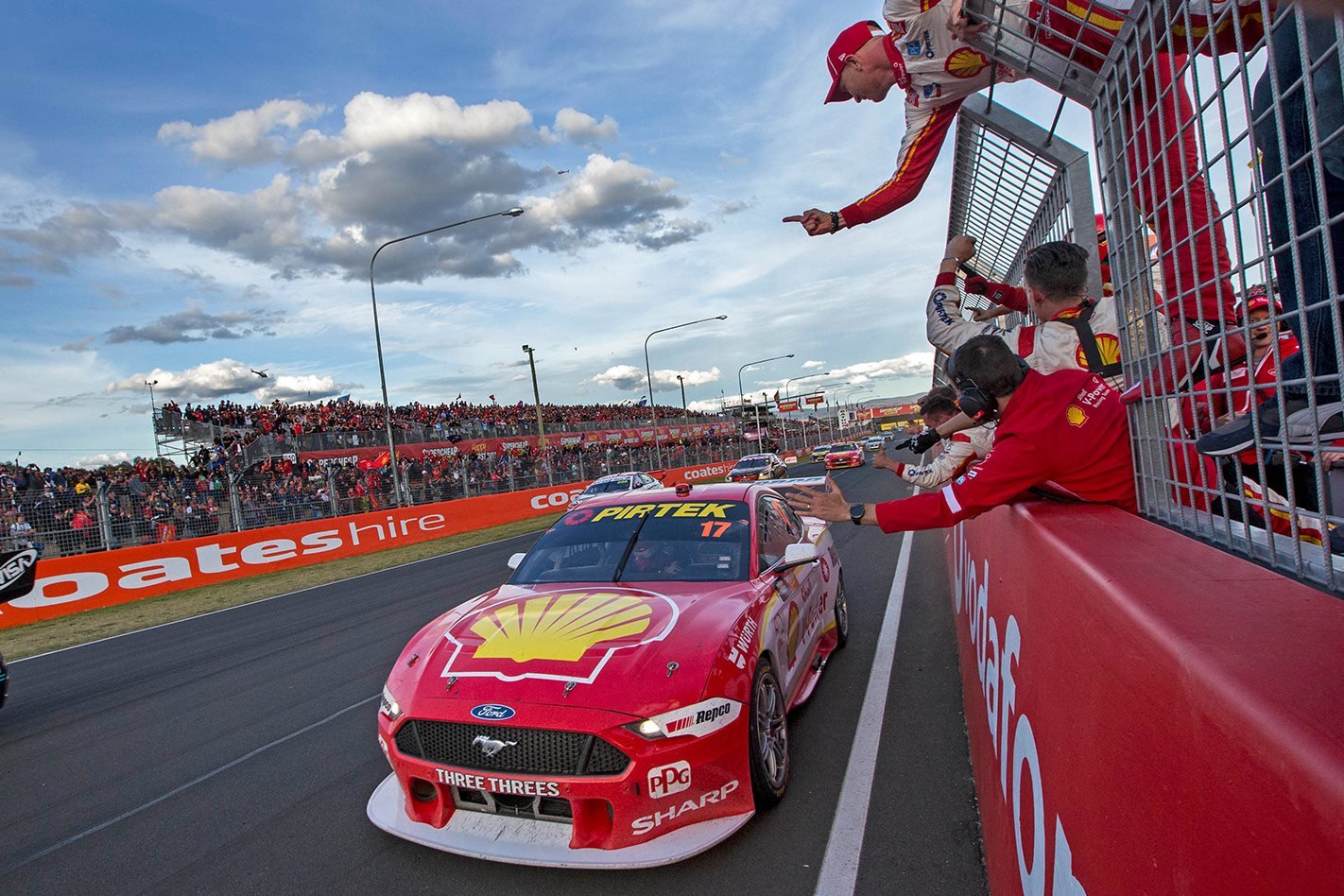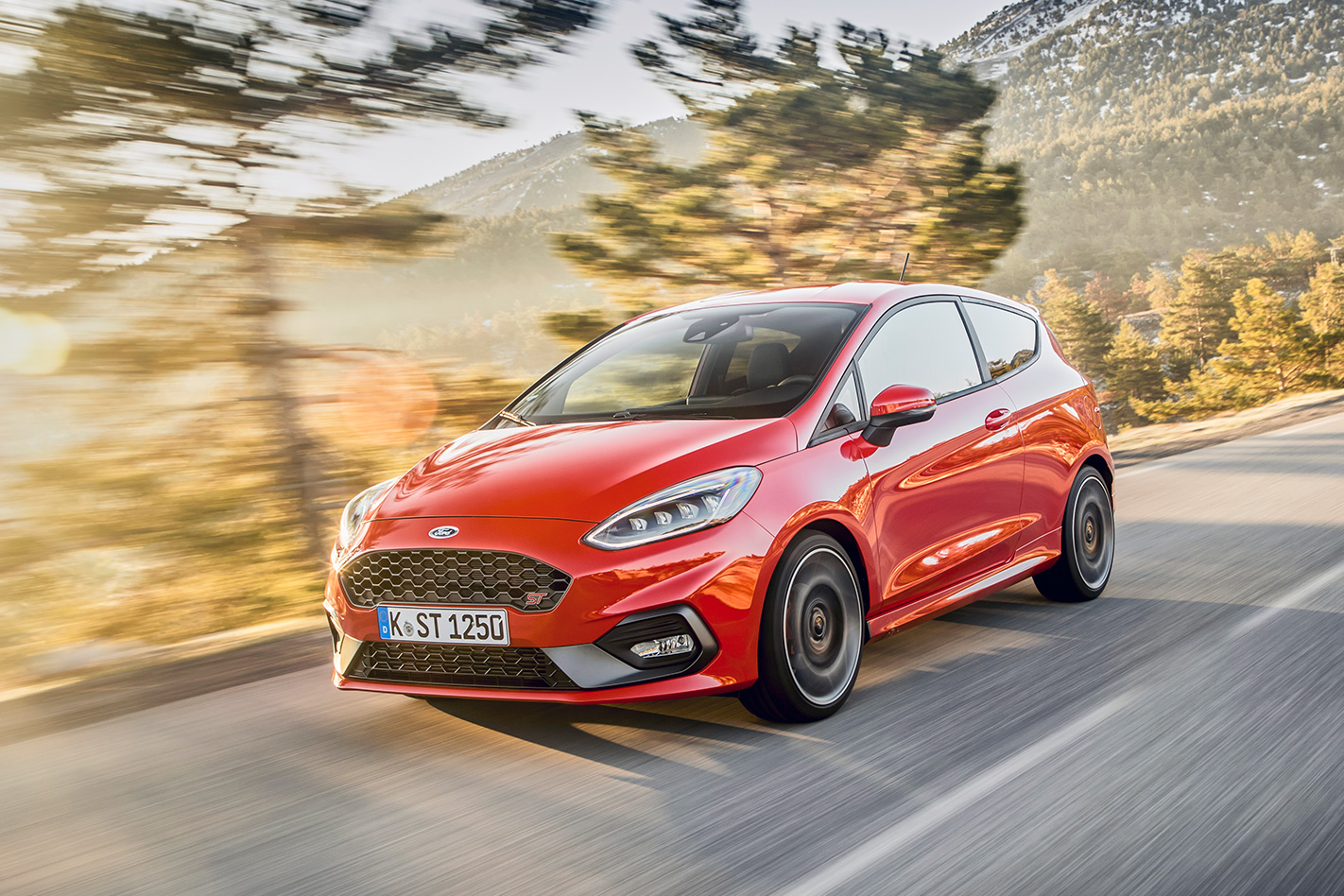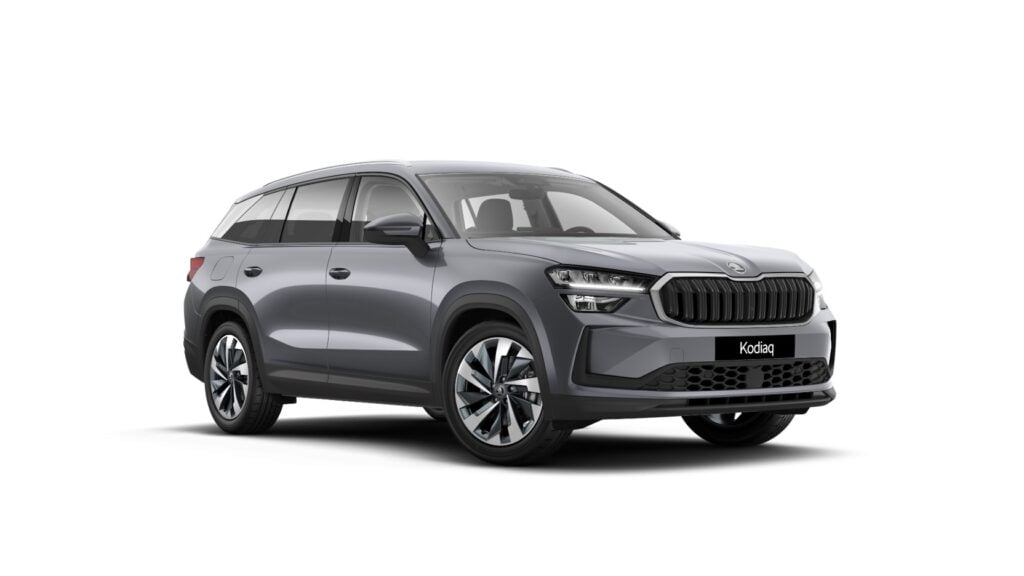
A bullish Ford Australia will look between its product lines to keep an even keel in the tumultuous waters of the local car market.
The managing director of Ford Australia and Ford New Zealand Kay Hart – in Bathurst to see the Mustang claim its first Bathurst 1000 win and the first for DJR Team Penske in 25 years – told WhichCar that pushing forward, cars that break the mould will be key to maintaining its position.
One of the plans is to continue to grow the Ford Performance brand, which Ms Kay said is linked to its support of the Supercars series.

Kay Hart sits with Roger Penske (L) and Dick Johnson (R) at a Supercars race in Perth
“It’s fantastic,” she said. “The Ford team here and the Ford Performance team in the US loves being in the sport. We have fantastic teams that we’ve developed such strong relationships with, and we are proud of what the guys are doing out there.”
And the support of the series, which looks likely to drop to just two manufacturers again from the start of the 2020 season, looks set to continue from Ford’s side.
“We’re still at the start of it,” said Ms Hart. “As we continue to bring more Ford Performance models to the market, that will help, and [the Supercars program] will have a much broader rub-off effect.”
The Ford Performance brand, meanwhile, will grow in 2020, with the addition of two new models next year.
“At the moment we have the Raptor, and we’ll add Focus ST and Fiesta ST next year, so I think the continued growth of product we offer under the Ford Performance banner, even with the R-Spec, and Ford Performance parts,” she said. “The more we bring to market, the more we talk about outside of our racing involvement.”

As a company, Ford has suffered a less dramatic sales drop than some of its rivals, dropping almost 10 percent last month measured year on year where others fell much more sharply.
Ford’s fortunes are held up by the sales-leading Ranger, while the Mustang’s strong sales performance continues to defy conventional wisdom that sports cars sales taper off sharply over time.
However, the performance of the majority of its SUV line-up is far below that of rivals like Mazda, while its passenger car entrants like the Focus aren’t firing especially well, either.
“It’s an extremely tough industry in terms of absolute volume,” Ms Kay agreed. “At the same time we’re seeing a shift in segmentation as well. Some of that shift is very positive for us, given there’s a shift towards yes, so it’s good for us with Ranger, for example, and a skew towards SUVs and away from passenger vehicles.
“So while some of that is positive and we’re trying to take away as much advantage as we possibly can of that with Ranger and Everest –and even the performance category with Mustang is holding steady – so we’ll just continue to work in with where the consumer is heading.
“Mustang R-Spec is one example of things we’re trying to do differently to take advantage of that segment, and Wildtrak X is another one, because of that shift towards the premium 4×4 market. The Focus Active, too, is looking at a slightly different buyer in that C-segment, and whether they’re ready to make a jump to a full shift to an SUV or look at the intermediate step.
“It’s just about what vehicles are really going to resonate here, and we’re still learning as we bring in these new variants.”
The head of Ford Australia, who has just celebrated her first anniversary in the role, isn’t concerned about the potential of a softening ute market affecting sales.
“It doesn’t worry us at the moment,” she said. “Ranger is such a great success for us here and I think the biggest success is that this vehicle is designed, engineered and developed in Australia by Australians for Australians, and that’s one of the secrets of its success.

“We continue to monitor what the industry does and what that means for the vehicles we bring in.”
Ms Hart also talked about the growth in sales of the relatively new Transit and its importance to the local bottom line.
“Transit is great, Ranger is great, Mustang is great, and Everest is really taking off too. So you’ll see us continue to listen and react to where the market goes.”
The next Ranger is currently in development with Volkswagen, and won’t emerge for a couple of years yet, but Ms Kay says there’s still life in the old T6 yet.
“The future growth [for Ranger] will come in the mid-range, I think. There will still be a lot of demand in the top end as customers look for more from that truck. Wildtrak, Wildtrak X, Raptor is great for it,” she said.
“A good example is the XLS Sport that we just brought out, and the XLT Fully Loaded package, are our play about how you give the middle-to-high segment a little more content but not the full Wildtrak or X package. I think you’ll see a lot more room in that XLS and XLT range in growth.”
While its rivals are rolling out seven-year free servicing deals at an increasing pace, Ms Kay pointed to Ford’s Service Benefits program, which locks in the price of the first four services up to five years.
“I think it’s the total ownership experience that we offer – the loan car, the map updates, the total package that you get, as well as the five-year ownership that we’re really driving, along with unlimited warranty and the guarantee of what the cost is of that servicing is what’s more important to customers these days,” she said.



